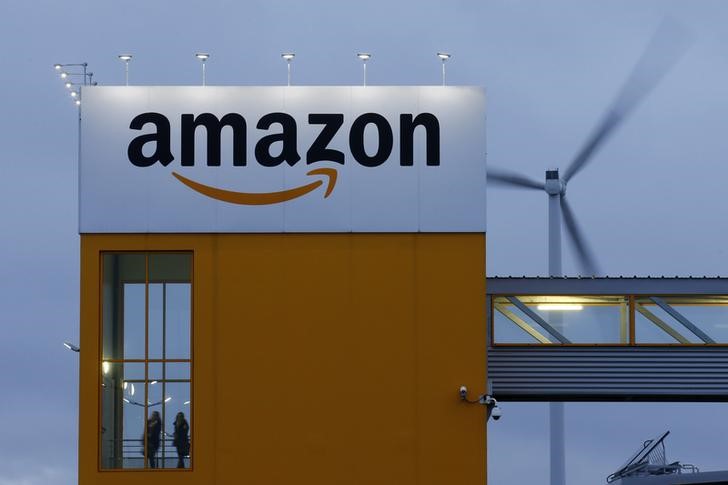© Reuters. FILE PHOTO: The logo of Amazon is seen at the company’s logistics centre in Boves, France, October 6, 2021 REUTERS/Pascal Rossignol/File Photo
By David Shepardson
WASHINGTON (Reuters) -A U.S. federal judge on Tuesday set an October 2026 trial date for a Federal Trade Commission antitrust lawsuit against Amazon.com (NASDAQ:).
The consumer protection agency filed the long-awaited antitrust lawsuit against Amazon on Sept. 26, accusing the online retailer of operating an illegal monopoly, in part by fighting efforts by sellers on its online marketplace to offer products more cheaply on other platforms.
The lawsuit, joined by 17 state attorneys general, was filed in federal court in Seattle and follows a four-year investigation.
Amazon and the FTC did not comment.
The agency asked U.S. District Judge John Chun to issue a permanent injunction ordering Amazon to stop what it called unlawful conduct. In antitrust cases the range of solutions may include forcing a company to sell a part of its business.
Amazon in December asked the court to dismiss the suit, saying the FTC confused “common retail practices” with anticompetitive conduct and failed to identify harm to consumers.
Last week, the FTC asked Chun to reject Amazon’s request, arguing the government laid out “how Amazon is a monopolist and explains how Amazon unlawfully maintains its monopoly power, enriching itself while harming its customers.”
The FTC said Amazon used a series of illegal strategies to boost profits, including an algorithm that pushed up prices U.S. households paid by more than $1 billion.
Amazon, which has 1 billion items in its online superstore, created a “secret algorithm internally code named ‘Project Nessie’ to identify specific products for which it predicts other online stores will follow Amazon’s price increases. … Amazon used Project Nessie to extract more than a billion dollars directly from Americans’ pocketbooks,” the FTC said.
Previously, Amazon said the FTC “grossly mischaracterizes” the pricing tool and the company stopped using it several years ago adding it was “used to try to stop our price matching from resulting in unusual outcomes where prices became so low that they were unsustainable.”
This story originally appeared on Investing

